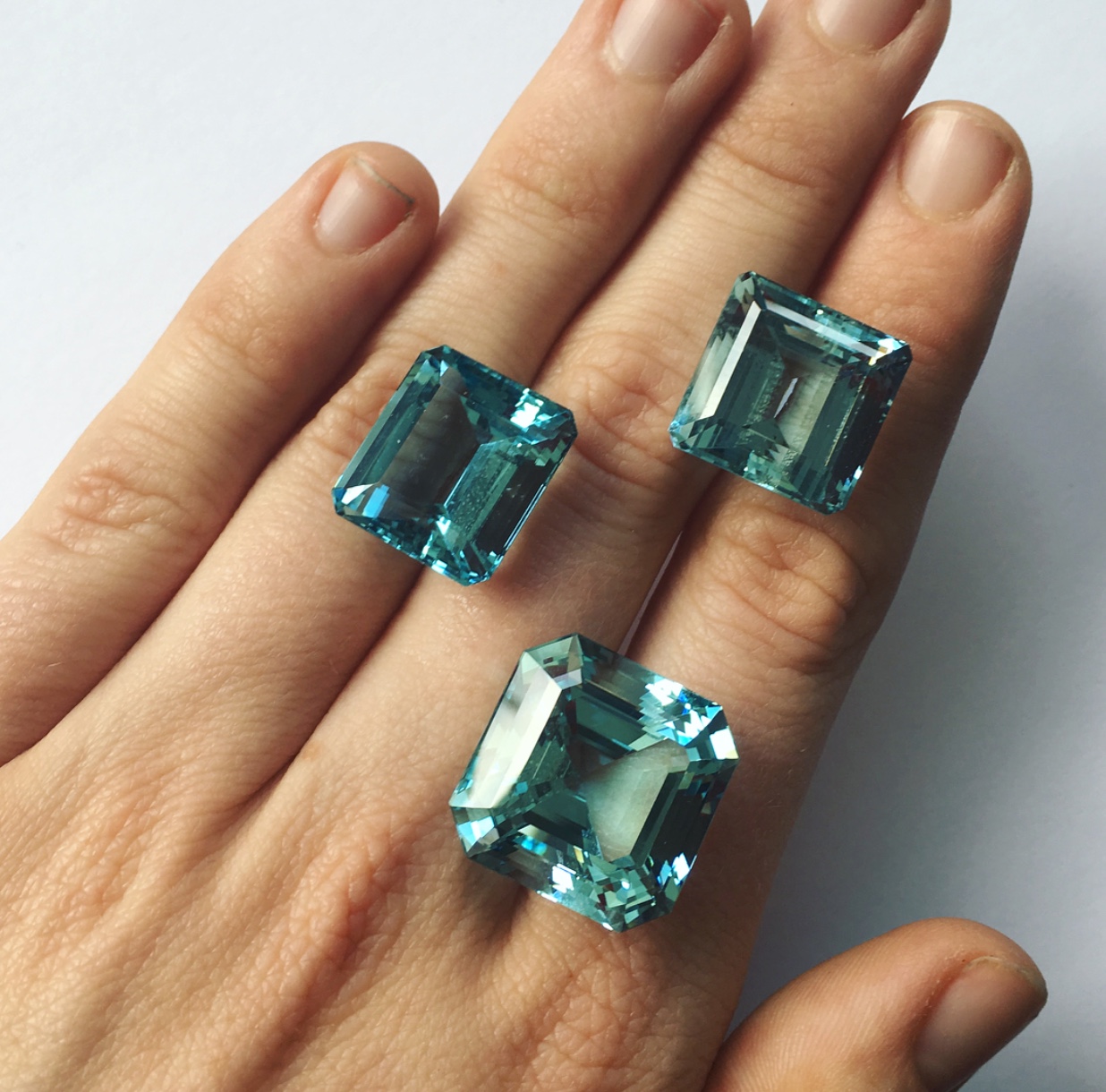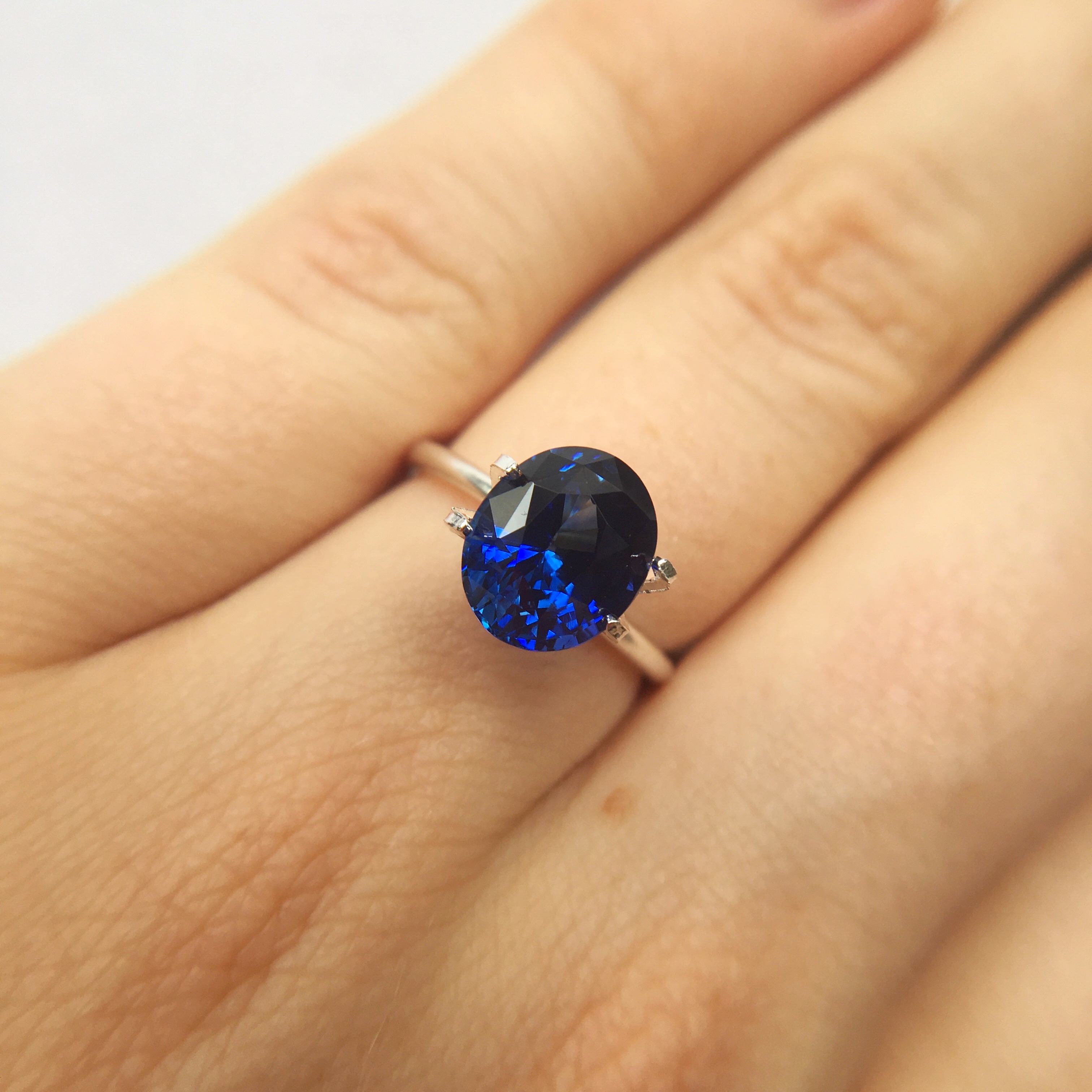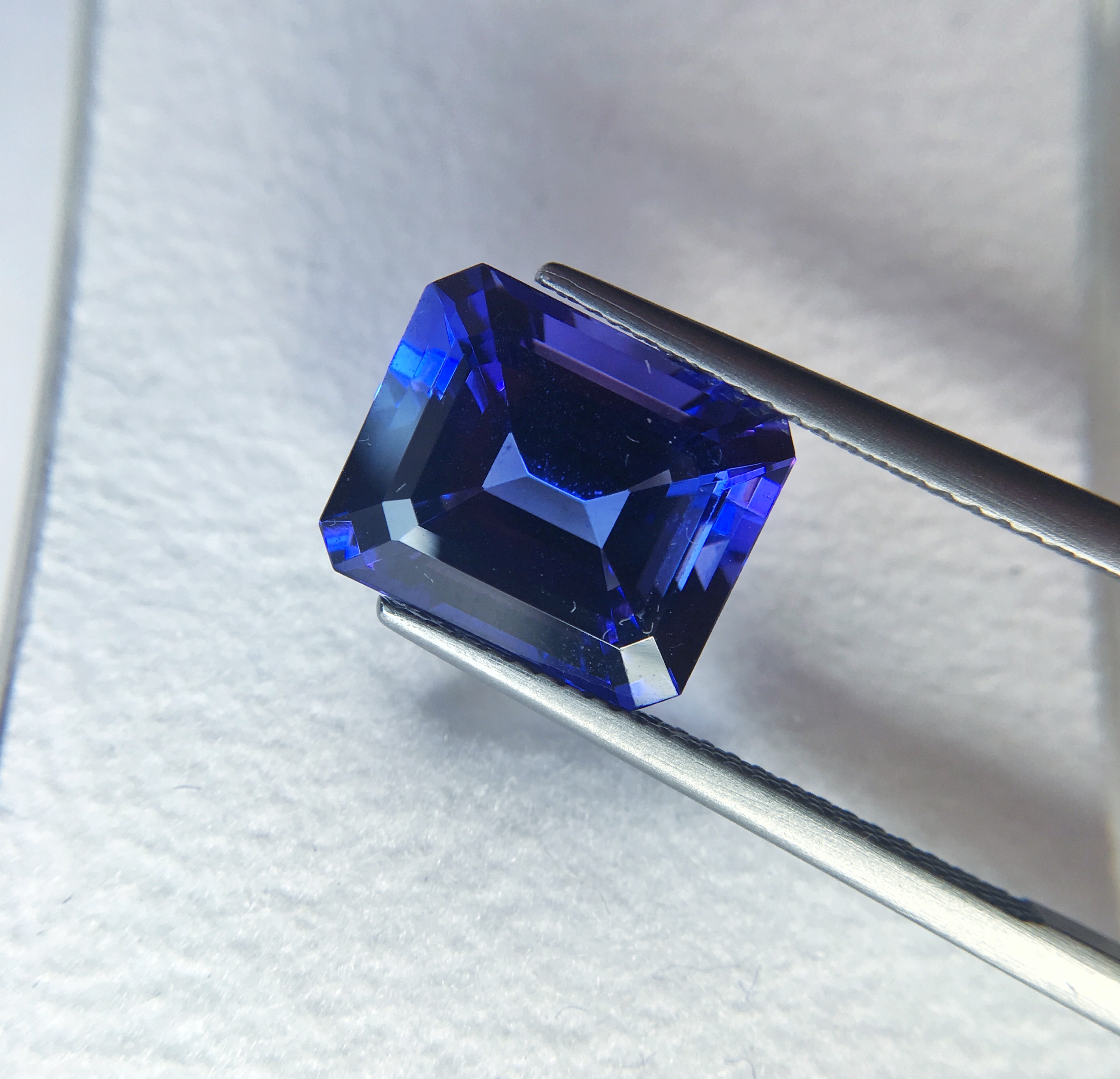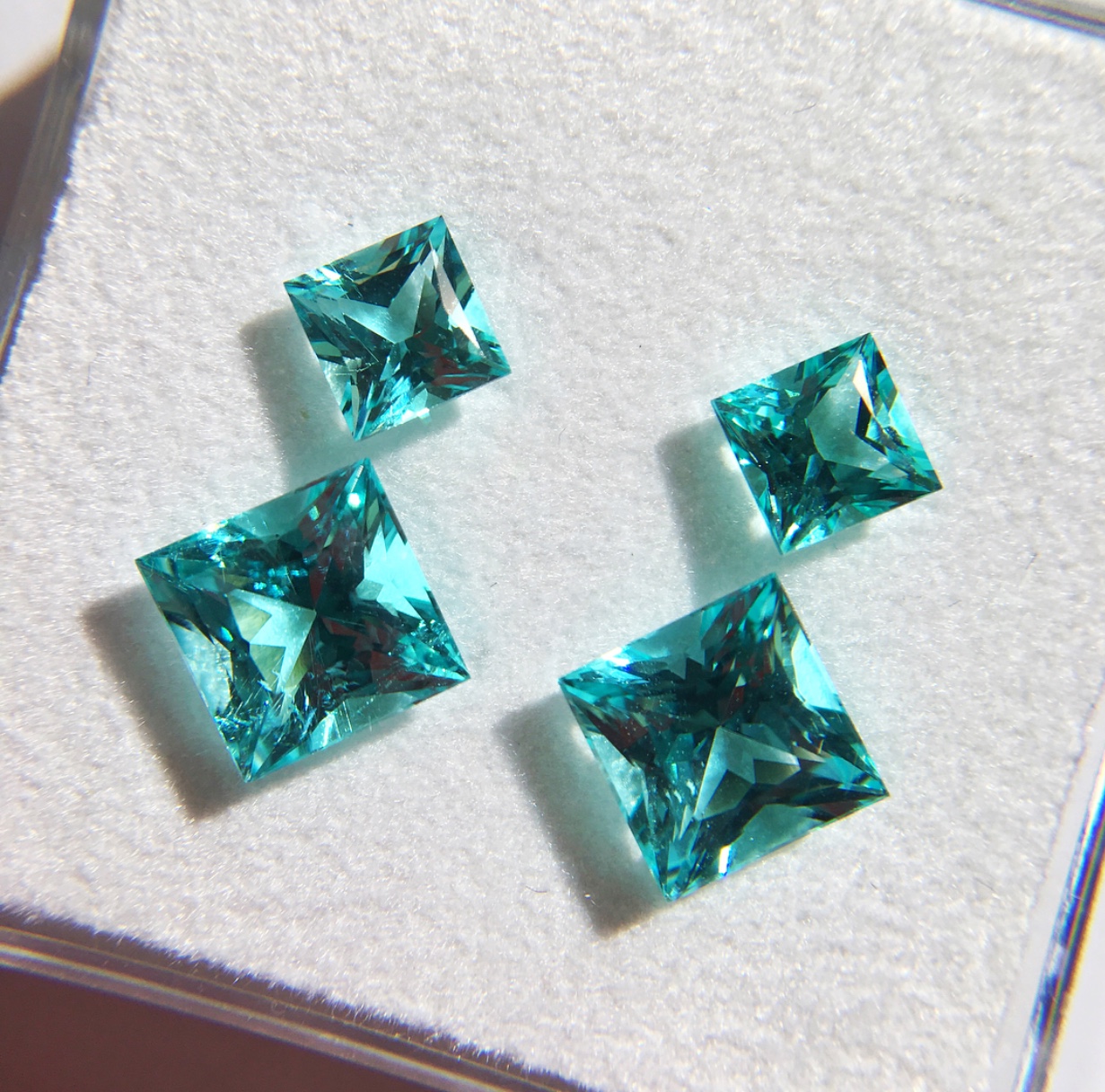Miro, the famous abstract artist, said of blue, “This is the colour of my dreams. Blue is a unique colour and even a totally non sighted person has a special receptor that senses blue.” As far back as the Renaissance, painters used Lapis Lazuli from Afghanistan to make blue pigment. It was almost as expensive as gold and as such was considered a fit and proper colour for the Virgin Mary’s cloak. Even further back, Ancient Egyptians and Babylonians used Lapis for jewellery and amulets, believing it to have a magic aura that defended against the evil eye. In the gemstone world the four most important blue gemstones are Sapphire, Aquamarine, Tanzanite and Paraiba Tourmaline.
Sapphire is one of the most popular gemstones; with its exceptional hardness of 9 it is a really good stone for engagement rings. The blue can range from almost white to almost black, with all the different shades in between. For many years we used stones from Kanchanaburi in Thailand, which yielded a beautiful mid-blue Sapphire. However, it was mined out a few years ago and we are all looking for the next source.

A number of Sapphires have wonderful myths attached to them and our favourite is the blue Sapphire in the British State Crown that was said to belong to Edward the Confessor and used in his coronation in 1042. But possibly one of the most famous Sapphires is the one in Princess Diana’s iconic engagement ring, which Prince William in turn gave to his intended and now adorns the hand of the Duchess of Cambridge.
Another of Diana’s rings played a part in Prince Harry’s nuptials when Meghan Markle wore her Asprey emerald-cut aquamarine cocktail ring to their evening reception. Aquamarine is one of the few stones that is clean enough for the emerald cut, but also looks wonderful cut as an oval or cushion.


A member of the Beryl family, Aquamarine was historically worn by sailors at sea to protect them from enemies, often carved with an image of Poseidon the Greek God of the sea. They are one of the most difficult stones to value as the smallest difference in the saturation of colour represents the largest percentage of change in price in the coloured stone world. It’s therefore important that an Aquamarine is bought from a reliable source or against a sample. Also, counter-intuitively, the bigger the stone does not necessarily mean the more expensive per carat, as small 1-4 carat deep-coloured stones are rare and therefore prized.
One stone that is commonly found in large sizes is Tanzanite, also one of the few stones that is only found in one source – Tanzania. Tiffany first used and named it and it is an exceptionally beautiful deep blue stone, with this and its size making it a good alternative to Sapphire. However, be warned, not in a ring for daily wear. Tanzanite has low hardness and does not wear well. But for pendants and earrings it is great.
In the 1980s a wonderful, bright blue stone appeared on the market. Miner Heitor Barbosa dug for years on a hunch that there was an exceptional stone to be found in the mountains near the village of São José da Batalha in Paraíba, Brazil. He did indeed hit the jackpot but unfortunately died a few years later, so never realised the benefit. There is not a stone like a fine Paraiba Tourmaline – it literally glows – and the expression ‘Hollywood swimming pool blue’ is a very good one. The current source is Mozambique and the definition is a Tourmaline that is coloured by Cuprian Elbite.
Gemstone specialists GF Williams supplies a huge range of high quality coloured gemstones and is an expert and experienced gemstone supplier to designers, manufacturers, collectors and private clients.
Find out more about how GF Williams can fulfil your gemstone requirements by browsing our online gemstone catalogue or contacting our friendly team of gemstone experts on +44 (0) 207 405 5477 or email office@gfwilliams.co.uk.



